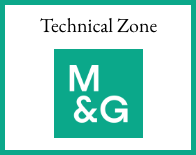Alistair MacDougall, ATEB Consulting, considers the need for platform switching, client outcomes and the extent of the suitability report required when a switch is recommended.
Platforms play a big part in the investment process of most UK firms. According to Defaqto, 94% of advisers place 50% or more of their new business on a platform, while as many as 20% choose not to place any client assets off-platform at all.
That being the case, it is no surprise that the FCA at least wants to make sure that firms use the platforms best suited to their clients, which might mean using more than one platform to meet the needs of a varied client bank and also might necessitate switching clients away from aged or inefficient platforms from time to time in order to take advantage of lower cost options and/or new operators/technology.
Back in February 2021 we published an article related to platform switching. The article was spurred by the FCA having published PS19/29 in late 2019, with new rules intended to make platform switching easier, which were scheduled to take effect from 31 July 2020 so as to give platform operators time to prepare for the new requirements.
As a result of COVID, the implementation date of the new rules was deferred until 1 February 2021 and, that date having passed, it was timely to publish our article to explain the impact of the new rules for advisers and clients. We’ll get to the detail of those rules a little bit later.
Due diligence, hassle and inertia
Meanwhile, it appears that firms have been slow to react to the new ‘easy’ platform switching environment. In our experience, firms have historically tended to select a platform and stick with it year after year. Annual research and due diligence appears to show that the selected platform(s) remains appropriate although it must be said that the outcome of the review can often depend on the criteria input to the process. Why have firms been reluctant to change platforms? Well there is an obvious hassle factor and with hassle comes cost. It could be a pain for clients too. Also, the power of inertia should not be underestimated. But perhaps, despite the rule changes, switching platforms is still not ‘easy’ or at least is not perceived to be so by adviser firms.
That might be about to change. A recent survey of advisers indicated that 69% of advice and discretionary fund management firms were “on track to end the relationship with their platform” in the next year. The findings are interesting, although we note that the survey was commissioned by SECCL, a technology firm specialising in software to enable firms to run their own platform. You can download the full report here.
So what about the new rules?
The primary new rules for platform operators were intended to eventually include:
- Timescales for completing switches
- In specie fund switch
- Ban on exit fees
Given these new requirements, in particular the latter two, clients would be able to be switched without exit fee to a new platform and maintain the same funds at the same prices on the new platform as were held on the old platform without the need to encash and repurchase (subject to a few practical conditions around different unit/share classes). Accordingly, as the asset mix would have previously been subject to a suitability assessment and personal recommendation and there were no changes or costs involved in the switch (assuming the same adviser and no new adviser charge being levied) the only changed aspect would be the underlying platform. While that change would warrant a personal recommendation and client authority to proceed, it is fair to say that the suitability report could and should be pretty light touch. As per COBS 9A:
“where an investment firm provides a service that involves periodic suitability assessments and reports, the subsequent reports after the initial service is established may only cover changes in the services or instruments involved and/or the circumstances of the client and may not need to repeat all the details of the first report”
Of course, this assumes that the reasons for switching stack up in the client’s interest. In our view, that would automatically apply when overall costs (including any initial and ongoing adviser charges) are reduced and/or functionality is increased ( e.g. new platform allows client online access to valuations and or trading). If costs increase and/or functionality (that the client requires or values) is reduced, then rather more detail would be required to justify the switch.
Similarly, things get a bit more complicated when there are tax wrappers involved, i.e. ISA and/or (SI)PP. In that case, the costs and, for pension plans, the functionality/features would also need to be considered and would require a more detailed suitability assessment/report.
Exit fee back track
In the light of events, we need to consider what actually happened around the intention to ban exit fees. In November 2020, the FCA published the following statement:
“We announced in Policy Statement 19/29 that we would consult on restricting platform exit fees in Q1 2020. However, this was delayed due to coronavirus, with an intention to consult in May 2021; we have now decided to stop work on this consultation.
Since expressing our concerns in the 2018 Interim Report, there has been a marked shift in the market away from exit fees, with at least two major platforms announcing that they would no longer be charging exit fees. The FCA welcomes the direction of travel by the investment platforms sector in phasing out the use of exit fees.
The Exit Fees Consultation was one of a number of remedies to address barriers to switching, including new rules to make moving platforms easier which have already been put in place and come into force in February 2021. We have therefore decided to stop the exit fees work but will be closely monitoring the situation, with the potential to consult on new rules if market changes lead to harm re-emerging in this area.”
This was unfortunate. In February 2020, Which? had reported that “Two fifths of investors won’t switch providers because of high exit fees” although many of these investors would be better served and would incur lower overall charges by switching.
Accordingly, the anticipated easy, in-specie platform switch with no exit fees that the FCA had intended to bring to bear is not quite in place. While some platform operators have ceased charging exit fees, it is believed that many still levy an exit fee. So, where that applies, the fee needs to be considered when recommending a platform switch.
Pension switches
Similar considerations apply to a certain degree when considering a pension switch or any other replacement business (whether or not a platform is involved).
A switch always requires a personal recommendation and suitability report but the level of detail required varies according to the facts if the situation and is dependent on the costs/ features scenario as described above.
If the plan being recommended will result in lower overall costs (again including any initial and ongoing adviser charges) and adds desired functionality then the job is pretty much done and the recommendation is easy to justify. Otherwise, a rather more detailed justification of the switch recommendation would be required.
The problem is that in our experience many, if not most, switches seem to come with increased overall costs (it is not sufficient merely to compare plan costs). That increase in costs and the implications for future returns needs to be clearly outweighed by other benefits that the switch would bring and making a clear and robust case for a switch that increases costs is not always simple. For example, how much value can be given to ‘more fund choice’ or ‘consolidation’?
In its thematic review of switches, the FCA found the former common reason for switching of questionable value, especially as there was often little evidence that the client needed or would use more funds. And while there can be genuinely valuable benefits of consolidating, in terms of creating a coherent and more easily managed investment strategy, those benefits, or any others used in justifying the switch, need to clearly outweigh any increased costs that will arise. Simplifying the pretty minimal, or even non-existent, paperwork involved with the client’s two or three existing plans is rarely likely to be worth the future impact on fund value that is the consequence of increased costs.
Our View
COBS rules essentially require a personal recommendation and suitability report whenever consideration is being given to a client acquiring or selling defined assets. ( See COBS 9). But recommendations to existing clients do not always have to result in a lengthy, detailed suitability report.



































